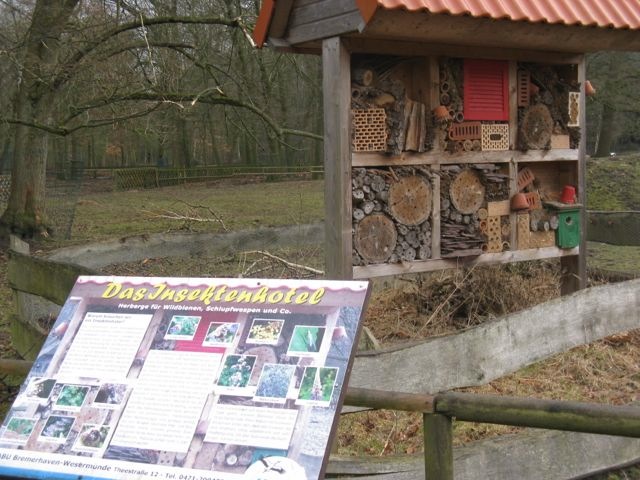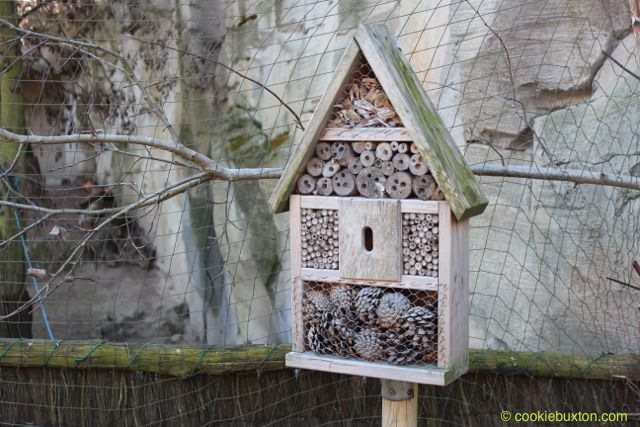Insect Hotels and Condos
What, you may be wondering, are insect hotels and condos? When I first saw a sign for an insect hotel, it certainly caught my eye. What really drew my attention, though, was the gorgeous work of living art nearby that was, yes, an insect hotel. I have since learned that the term insect condo is being used as well, to denote that these structures are in fact the insects’ permanent dwelling, rather than simply a stopping place for a night or two.
Insect hotels are deliberate constructions to provide habitat for garden insects. The move to provide suitable habitat has become a serious initiative in Europe in areas where grounds are meticulously cared for and natural habitat for insect reproduction is not always reliably available. Driving construction of these abodes in many cases is the need for dwellings for solitary bees, which are responsible for pollinating many of the plants in urban gardens. With the issue of bee colony collapse still unresolved, ensuring the health and reproduction of solitary bees becomes a critical strategy in ensuring that we maintain healthy populations of insects for cross-pollination.
Quite apart from the utilitarian benefits of insect hotels, I think these structures are simply gorgeous in their own right. They look like works of fine art created by designers with a penchant for natural materials and rich textures. The fact that insect hotels offer settings for reproduction and overwintering of insect populations is of course very important, but these hotels are fascinating to view as garden art as well.
In my own home garden, I don’t yet feel a need for such a structure. I have for some years been leaving the leaves on the garden beds through the winter and not cleaning up until spring is well underway. I have a skinny passage alongside my garage where the grasses grow tall, there are bricks stacked there, some small stacks of firewood, upside down pots, and so forth. Most of my plants are perennials. I leave these plantings uncut or cut back only a third until the spring, except for early blooming plants such as peonies. There is no shortage of places in my yard where insects, including solitary bees, can overwinter and so, for the time being, I don’t see an urgent need to build an insect hotel. Nonetheless, I will give this some careful thought, and will check to see if I am offering the right kind of garden setting to sustain healthy populations of beneficial insects.
Insect hotels are gaining in popularity as awareness of the needs of insect populations become better known. It would be wise to give these ideas some consideration for use in our local gardens in the coming years. In any case, I think it would be satisfying to build one of these interesting structures, on a smaller scale, for the simple pleasure of incorporating “living art” into one’s own backyard garden.
Photos & Text: NK
Photo location: Germany
(Smaller structure at the Bremerhaven Zoo; larger Insect Hotel in Bremerhaven’s City Park)
Copyright: cookiebuxton.com

